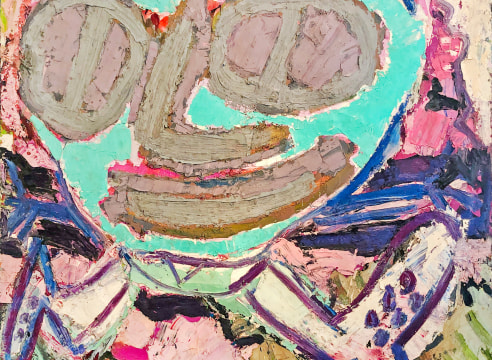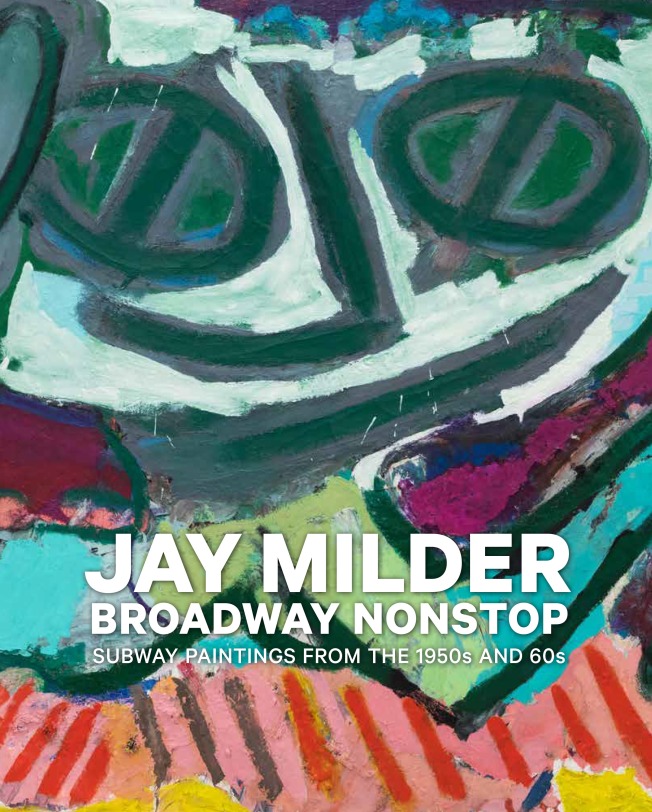
Jay Milder: Broadway Nonstop, Subway Paintings from the 1950s and 60s Eric Firestone Gallery
40 Great Jones St. | New York, NY
April 1–May 14, 2022
Eric Firestone Gallery is pleased to announce the exhibition “Jay Milder: Broadway Nonstop, Subway Paintings from the 1950s and 60s,” on view from April 1–May 14, 2022 at 40 Great Jones Street. This will be the first solo exhibition of Milder’s early work in New York City in several decades. Milder made New York City subway riders his subject; his paintings are characterized by their wildly impasto surfaces and expressionist paint handling. Faces and limbs are outsized, filling the canvases in ways that call attention to emotion and psychological connection. Carter Ratcliff termed Milder an “urban visionary.” The people in his paintings become intense, tempestuous characters that prefigure the “Cartoon Noir” style of Joyce Pensato or the experiential scenes and visceral personalities in Dana Schutz’s canvases.
Milder’s explosively energetic series, the “Subway Runners,” were the subject of a solo exhibition at Martha Jackson Gallery in 1964. The works are based on people running to catch New
York City subway trains. Faces and heads dominate most of the large-scale canvases, with arms and legs in motion, and subway tracks depicted with loose, gestural marks. Works in the show include “Turquoise Runner,” 1963, and “Yellow Subway Runner,” 1963, both of which are characterized by the thick impasto application, some areas of paint rising off the canvas by up to two inches. The show will also include a selection of Milder’s gouache works on paper.
Milder was inspired by the energy and motion, history, and constant flux of the city. The surfaces of his paintings are emblematic of layers of paint and grit on building walls. He experimented, early on, with spray paint, and added volcanic ash to pigment to create a coarse impasto. This, along with his subject matter of the subway, have led art historians to connect his work to street art. Over the decades, the constant in his work has been what he terms “figurative symbolism” and a belief that paintings should convey a sense of the connection between mystical experience and material presence. Milder says, “If you don’t have joy, you don’t have anything.” Milder co-founded, with Red Grooms, the artist-run City Gallery in their shared loft in the Flatiron District, giving Claes Oldenberg and Jim Dine their first New York exhibitions. In 1959, the City Gallery’s operations expanded to a studio loft run by Grooms, Milder, and Bob Thompson on the Lower East Side. The new gallery would become known as the Delancey Street Museum.
Jay Milder (b. 1934) grew up in Omaha, Nebraska. As a young person, Milder lived in Paris and studied with Ossip Zadkine and André Lhote. There, he became aware of the work of Chaim Soutine, who would be an important influence in terms of a gestural, painterly approach to Cubism enlivened by spiritual belief. Milder befriended painter Ed Clark, who showed him around the city, as well as Yves Klein and met writers Richard Wright and James Baldwin. Milder’s travels to Morocco and Mexico also informed his early development. After returning to the States, Milder studied briefly at the Art Institute of Chicago, and later at Hans Hofmann’s summer school in Provincetown. There, Milder met Bob Thompson, Red Grooms and Mimi Gross, and they, along with Alex Katz and Lester Johnson, showed together at the Provincetown cooperative, the Sun Gallery. His community included Gandy Brodie, Jan Muller, and Emilio Cruz: all later recognized for a style defined as Figurative Expressionism.
Milder’s work is represented in the collections of the Chrysler Museum, Norfolk, VA; the Mint Museum, Charlotte, NC; and the Museo Nacional de Arte Centro Reina Sofía Museum, Madrid, Spain. He was the subject of a 1991 retrospective at the New England Center for Contemporary Art. Milder has lived in Brazil, and he was the subject of solo exhibitions in 2006 at the Museum of Modern Art in Salvador, Bahia, and Rio De Janeiro, and, in 2009, at the National Museum of Brazilia. He was the subject of a 2019 retrospective at the Provincetown Art Association and Museum: “Jay Milder: Unblotting the Rainbow.”
JAY MILDER: BROADWAY NONSTOP, Subway Paintings from the 1950s and 60s will be on view through May 14, 2022 Eric Firestone Gallery | 40 Great Jones Street, New York, NY 10012

